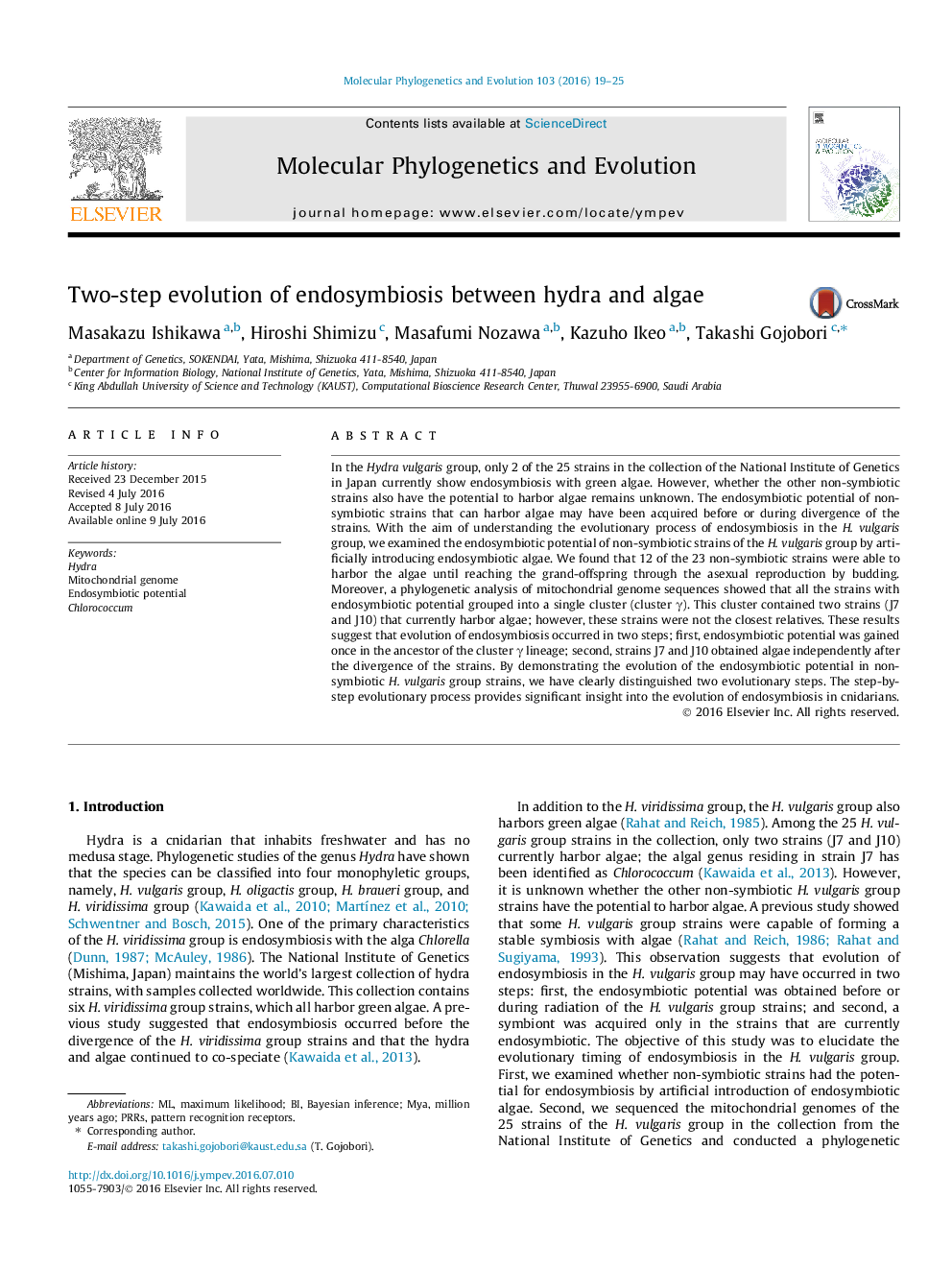| Article ID | Journal | Published Year | Pages | File Type |
|---|---|---|---|---|
| 2833625 | Molecular Phylogenetics and Evolution | 2016 | 7 Pages |
•Endosymbiosis between Hydra vulgaris group and Chlorococcm occurred in two steps.•H. vulgaris gained the endosymbiotic potential once during radiation of the strains.•H. vulgaris group strains obtained the algae after radiation of the strains.
In the Hydra vulgaris group, only 2 of the 25 strains in the collection of the National Institute of Genetics in Japan currently show endosymbiosis with green algae. However, whether the other non-symbiotic strains also have the potential to harbor algae remains unknown. The endosymbiotic potential of non-symbiotic strains that can harbor algae may have been acquired before or during divergence of the strains. With the aim of understanding the evolutionary process of endosymbiosis in the H. vulgaris group, we examined the endosymbiotic potential of non-symbiotic strains of the H. vulgaris group by artificially introducing endosymbiotic algae. We found that 12 of the 23 non-symbiotic strains were able to harbor the algae until reaching the grand-offspring through the asexual reproduction by budding. Moreover, a phylogenetic analysis of mitochondrial genome sequences showed that all the strains with endosymbiotic potential grouped into a single cluster (cluster γ). This cluster contained two strains (J7 and J10) that currently harbor algae; however, these strains were not the closest relatives. These results suggest that evolution of endosymbiosis occurred in two steps; first, endosymbiotic potential was gained once in the ancestor of the cluster γ lineage; second, strains J7 and J10 obtained algae independently after the divergence of the strains. By demonstrating the evolution of the endosymbiotic potential in non-symbiotic H. vulgaris group strains, we have clearly distinguished two evolutionary steps. The step-by-step evolutionary process provides significant insight into the evolution of endosymbiosis in cnidarians.
Graphical abstractFigure optionsDownload full-size imageDownload as PowerPoint slide
